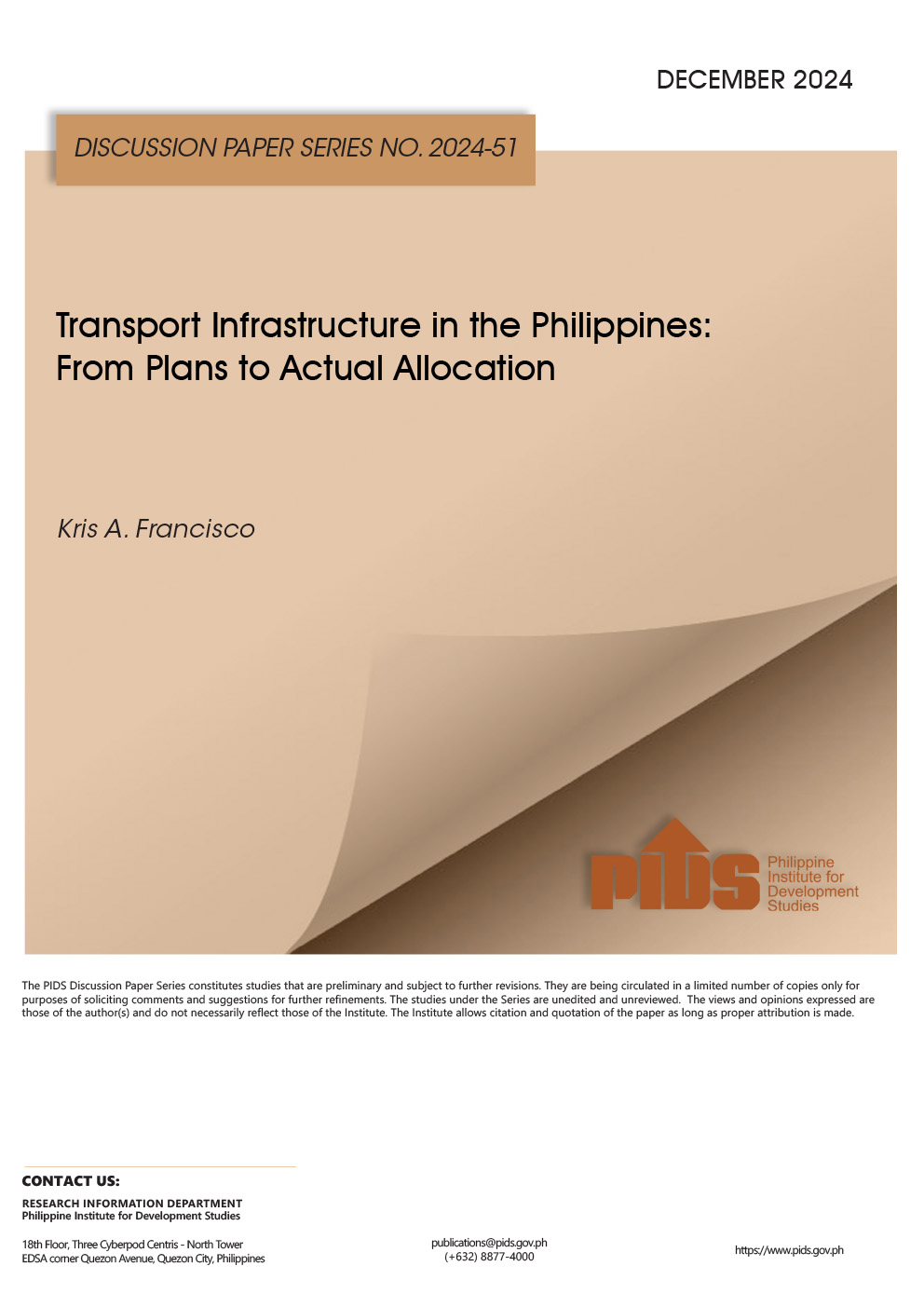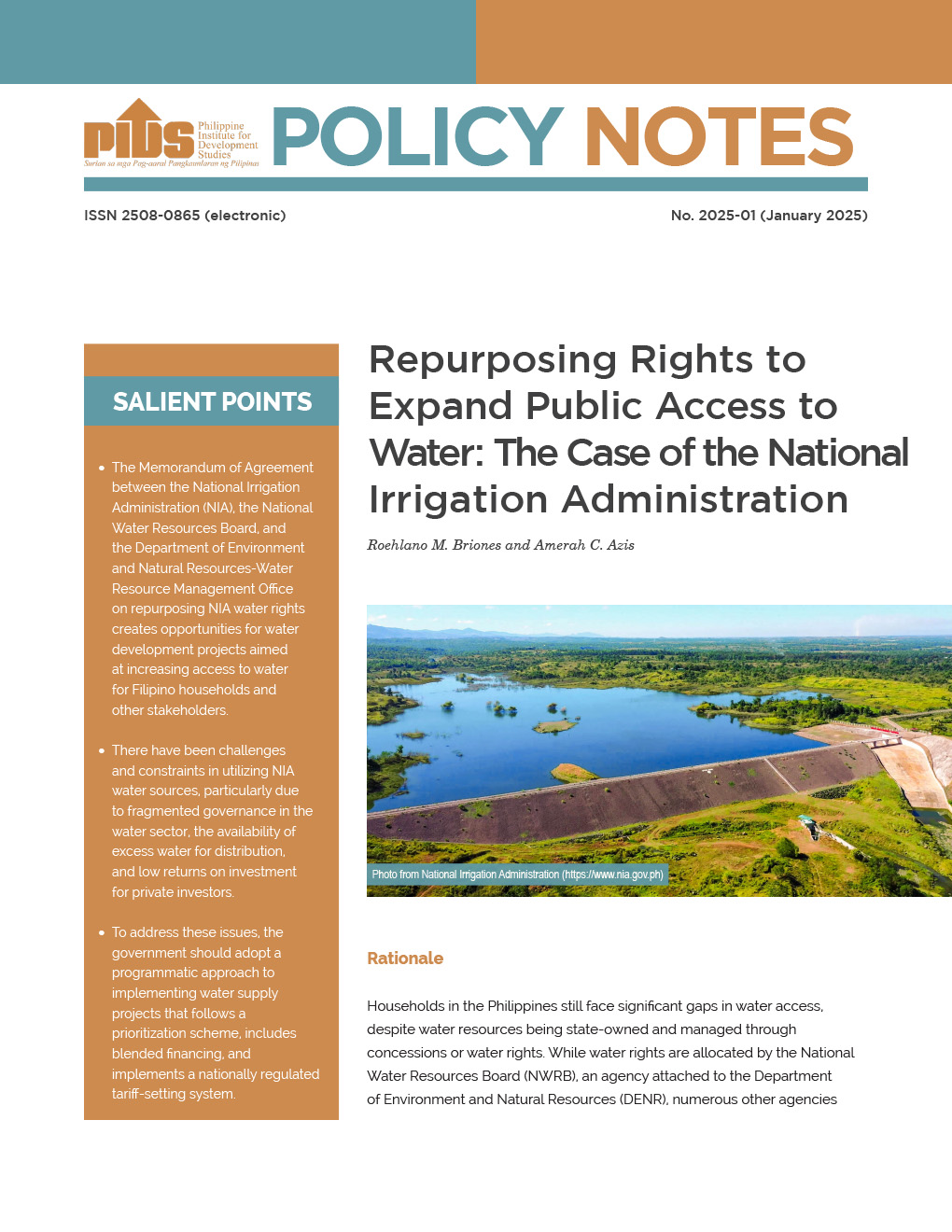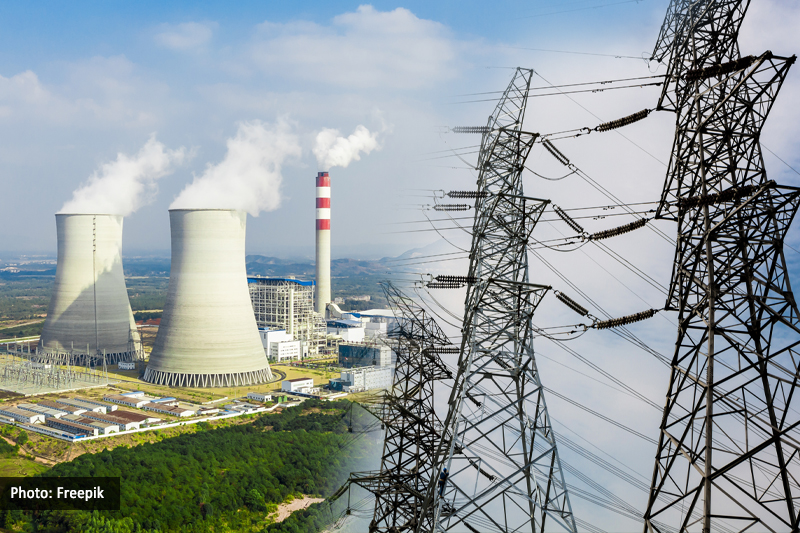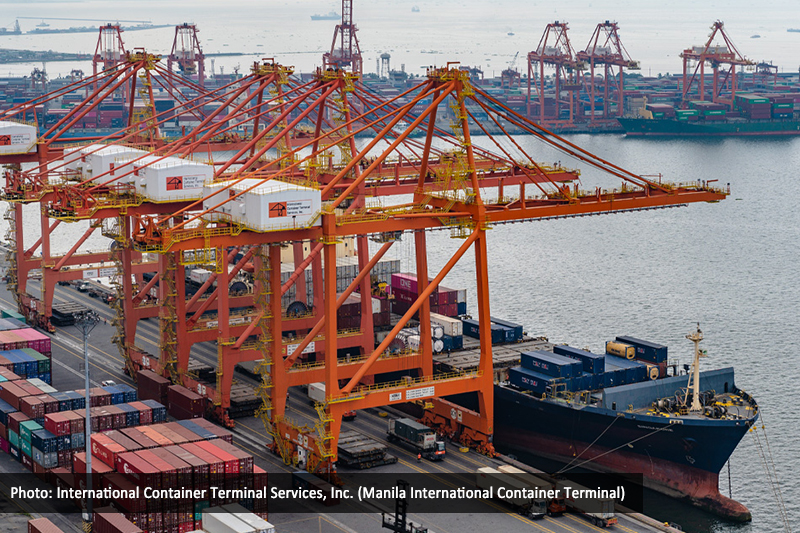In March this year, Jerik Cruz and Hansley Juliano published a research paper with the Asia Pacific Pathways to Progress Foundation looking at the Philippines’ so-called “pivot to China” under Duterte’s historic “Build, Build, Build” (BBB) program. The program promises to spend USD 180 billion on infrastructure in order to boost the Philippines’ immediate and long term economic prospects and improve connectivity across the archipelago.
As with so many other emerging economies in Asia and Africa, China and its “going out” construction companies have been expected to play a significant role in achieving the Philippines domestic program. Cruz and Juliano’s paper shows a more complex picture of continuity rather than drastic change under the BBB program, project corruption and pitfalls, and the threat of project cancellations and reputation damage. Panda Paw had the chance to speak to the two researchers last month.
Panda Paw Dragon Claw (PPDC): Much has been made of the Philippines’ “pivot to China”, particularly in relation to Duterte’s Build, Build, Build program, which like other countries in the region could potentially leverage Chinese investments for domestic transport and industrial upgrades. But the investment numbers so far seem to tell a different story. What is the Build, Build, Build program and what are the expectations and reality of the role of Chinese capital in the program?
Jerik Cruz (JC): In 2017, the Duterte administration unveiled Build, Build, Build (BBB), an initiative dubbed as “the boldest infrastructure development program in recent Philippine history.” Pledged to usher in a “golden age of infrastructure,” the government’s infrastructure drive originally aimed to invest an immense P8.44 trillion (USD 170 billion) across nearly five thousand projects in the next 4 years, including 75 mega-sized flagship ventures. The initiative is the single biggest surge in Philippine infrastructure spending in the past three decades.
BBB initially espoused a state-heavy role for infrastructure spending, both in terms of domestic and overseas funding. This was supposedly on account of dissatisfaction with the inefficiency of past public-private partnership-led infrastructure procedures, despite the installation of stronger good governance safeguards during the administration of Benigno Aquino III. The state-oriented approach has also been shaped by the administration’s “pivot to China”, which was cemented during Duterte’s state visit to the People’s Republic in October 2016.
Starting with the signing of at least 28 memoranda between Philippine cabinet officials and Chinese counterparts, the prevailing perception, in part shaped by how the Duterte administration has communicated the program, has been that BBB has privileged Chinese ODA at the expense of traditional bilateral partners, such as multilateral agencies (e.g. World Bank, the Asian Development Bank), Western governments, as well as other longstanding donors within the region (e.g. Japan, Australia, South Korea).
In practice, however, the picture has been more mixed. Though the allocation of proposed Official Development Assistance (ODA) funding sources has shifted since first being made public in 2017, many of the most expensive foreign-funded projects (e.g. the Metro Manila Subway Project, the North-South Commuter Railway), have remained assigned to Japanese ODA. As we show in our paper, while Chinese-assisted projects accounted for 14.6% of the administration’s planned flagship projects, 35.6% of those projects have continued to go to Japanese contractors.
PPDC: You comment that big infrastructure in the Philippines – and Chinese invested ones in particular – are often associated with corruption. What are the dynamics that are creating corruption in BBB infrastructure projects in the Philippines? Are Chinese investors complicit? And what should Chinese investors learn from the numerous high profile cases of embezzled funds and kickbacks?
JC: Our discussion on white elephant projects underscores that the drivers of such projects are rooted in local political dynamics in the Philippines, with risks varying from one level of government to another, as well as across agencies.
During the administration of Gloria Arroyo (2001-2010) and in some projects during the current Duterte administration there has been evidence of involvement of Chinese contractors in infrastructure corruption. The 2007 National Broadband Network-ZTE corruption scandal during the Arroyo government, where a contract awarded to ZTE to update the Philippine government’s broadband network was found to be overpriced by USD 130 million to account for kickbacks, seared the image of Chinese investors being more corruption-prone in the mind of the Philippine public. Recent findings on bid-rigging among Chinese contractors with respect to the Kaliwa dam by the Philippines’ Commission on Audit (COA) has done little to improve this image.
Chinese investors should exercise particular caution when entering into transactions for large-scale projects with the Philippines government. If they are seeking business opportunities that will deliver mutual wins, it is absolutely crucial that they perform their due diligence before undertaking their projects and ensure that the implementation of the project is compliant with Philippine laws, such as local environmental, good governance, and human rights standards. Whatever their local business and government partners may say, they should know these projects are now under high public scrutiny, especially in the post-COVID context. Precaution can minimise political risks. Additionally, we suggest that such investors look to start with smaller projects rather than mega-sized ones that come with exponentially greater political risks.
PPDC: Tell us a bit more about the Kaliwa dam project. How have the dynamics you’ve outlined played out in the case of the controversial and much-troubled dam?
Hansley Juliano (HJ): The preferential treatment and withholding of oversight responsibility is plain to see in the Kaliwa Dam case. Despite the fact that the Kaliwa Dam has significant structural and transparency issues, Finance Secretary Carlos Dominguez continued to insist publicly on the necessity of the project. The fact that processes related to the dam project were allowed to proceed despite not completing the necessary free, prior and informed consent (FPIC) structures entitled to Philippine indigenous communities (IP) affected by the project has also undermined the project. According to recent news reports, construction equipment for the dam is arriving on schedule. All of which demonstrates that the Duterte government seems to prioritize pleasing Chinese partners – in this case the China Energy Engineering Corporation (CEEC) – more than actually following the rule of law.
PPDC: In your paper you comment on the significance of the Philippines’ 2003 Government Procurement Reform Act (GPRA) in streamlining the procurement protocols for foreign assisted infrastructure projects. What impact is this having on project planning, procurement and initiation?
HJ: There has been much discussion in regard to the value of GPRA and how it has enabled government bodies to precisely conduct reform policies and actions. The law sought to simplify screening procedures for projects and limit scope for corruption by putting limits on the price tag of bids cost and on bid price readjustments. It also legally mandated the inclusion of civil society organizations in the monitoring of bidding and implementation.
In theory, this is all very commendable legislation. However, the law has fallen short on implementation and actual prosecution of violations. In particular, compliance by procurers such as local government units has been inconsistent, information shortage on issues such as contract management has remained severe, and the government run portal for public information on projects has had accessibility issues. The integration of CSOs has also been very limited in practice as well.
The assumption when it comes to procurement is that projects end up substandard due to the government choosing the cheapest contractors. However, what actually happens is that while the government normally awards contractors to the ‘best bids’, contractors themselves will often either scrimp on resources or employ subcontractors, which cheapens the overall cost of the project and frees up unused money for other, non-declared and non-audited purposes. Policies implemented under Duterte, along with the GPRA, do not actively address this.
More generally, while we cannot possibly cover all procurement activities (there are hundreds of thousands of procurement transactions occurring every month), it is evident that much depends on the drive of the president and government agency heads in terms of maintaining the integrity of procurement processes under Build, Build, Build. The Duterte government has been driven more by assumptions and ad-hoc agreements and announcements by either President Duterte himself or by key influential actors within his cabinet when it comes to policy-making.
PPDC: How do you expect the BBB program to adapt in the pandemic and post-pandemic era? Are more project cancellations on the horizon? Might we see a shift to different forms of infrastructure in an era of (possibly) less travel and lower GDP growth forecasts? Or will infrastructure construction be seen as critical to economic recovery, employment and long term growth?
HJ: Institutionally, little seems to be stopping the continuation of BBB Projects, though their implementation will necessarily be slowed down by the need to adhere to safety standards required during the pandemic. Despite persistent criticisms by different sectors and institutions of certain key projects, the government has insisted on pushing through with them.
The cancellation of the Sangley Point Project in early 2021 by the Cavite provincial government has become among the highest-profile this year. This implies, however, that the cancellation of a project requires a certain kind of ‘scalar political’ contention. That is, opportunities for renegotiation and a return to the drawing table can emerge if local government pushback and pressure on a project is large enough. This also implies that pushback on a project cannot rely solely on civil society pressure–especially not under a government that has little respect for civil society’s role in governance.
It is unlikely that investments will shift to different forms of infrastructure. As demonstrated in the case of the Kaliwa Dam and other projects, the government is intent on holding steady to the pre-pandemic course of the BBB. In fact, the Duterte government insists that such projects are precisely “critical” to its economic recovery programs. Despite vociferous criticism of such projects’ limited effects to post-pandemic recovery since December 2020, there has been little change in direction.
Criticism has also emerged from the Philippine Institute of Development Studies (PIDS), the research think-tank of the National Economic Development Authority (NEDA). A recent PIDS report by Janet Cuenca suggests a significant lack of infrastructure development for schools and healthcare systems. If there will be any possible pivot in infrastructure project prioritization, the direction perhaps should be here.
PPDC: Lastly, do you expect that the current high tensions between China and the Philippines over the Whitsun Reef will affect the pace of Chinese companies’ involvement in Duterte’s BBB program, or change Duterte’s attitude to attracting Chinese investment?
JC: Based on his recent statements, including a claim that “retaking the West Philippine Sea was never a campaign promise” (when he instead remarked in a national televised debate in 2016 that he would “ride a jet ski” to the Spratly Islands to plant the Philippine flag), it seems quite unlikely that the dispute will do anything to change Duterte’s mind on his China policy. If anything, Duterte’s rhetoric throughout the kerfuffle, especially on the value of the Philippines’ 2016 arbitral win over China at the Permanent Court of Arbitration, has seemed to echo the response of Chinese government at the time.
However, the administration’s poor management of the pandemic in 2021 has certainly cast Duterte’s deferential position to China in a terrible light, with some critics now comparing him to “lawyering for China” and being China’s “second ambassador” to the Philippines. Whatever Duterte will be doing, the issue, along with the government’s weak handling of the COVID pandemic, will no doubt stick in the public radar as the Philippines next presidential elections of 2022 comes closer. Expect the country’s political opposition to push even harder on this issue in the upcoming months.
HJ: If the opposition is strong and organized enough, one could expect to some extent a possible ‘cooling effect’ of investments in Philippine activities related to the BRI infrastructures, however (except maybe the infrastructure projects that actually are underway and have been demanded for by people in their locations, i.e. bridges and the like). There is some precedent in Philippine history that when an infrastructure meets serious public opposition, it tends to scare off investors, both domestic and international — the Bataan Nuclear Power Plant under Marcos being the most memorable example. However, as Jerik mentioned above, this relies to some extent on the capacity of the political opposition to highlight, convince and mobilize the public of the government’s shortcomings on this front. Whether they are actually able to do that under the current pandemic context (also bearing in mind how passive the political opposition has been over the last 3 years), the jury is still out
BRI and the Philippines’ BBB – where two infrastructure projects meet












